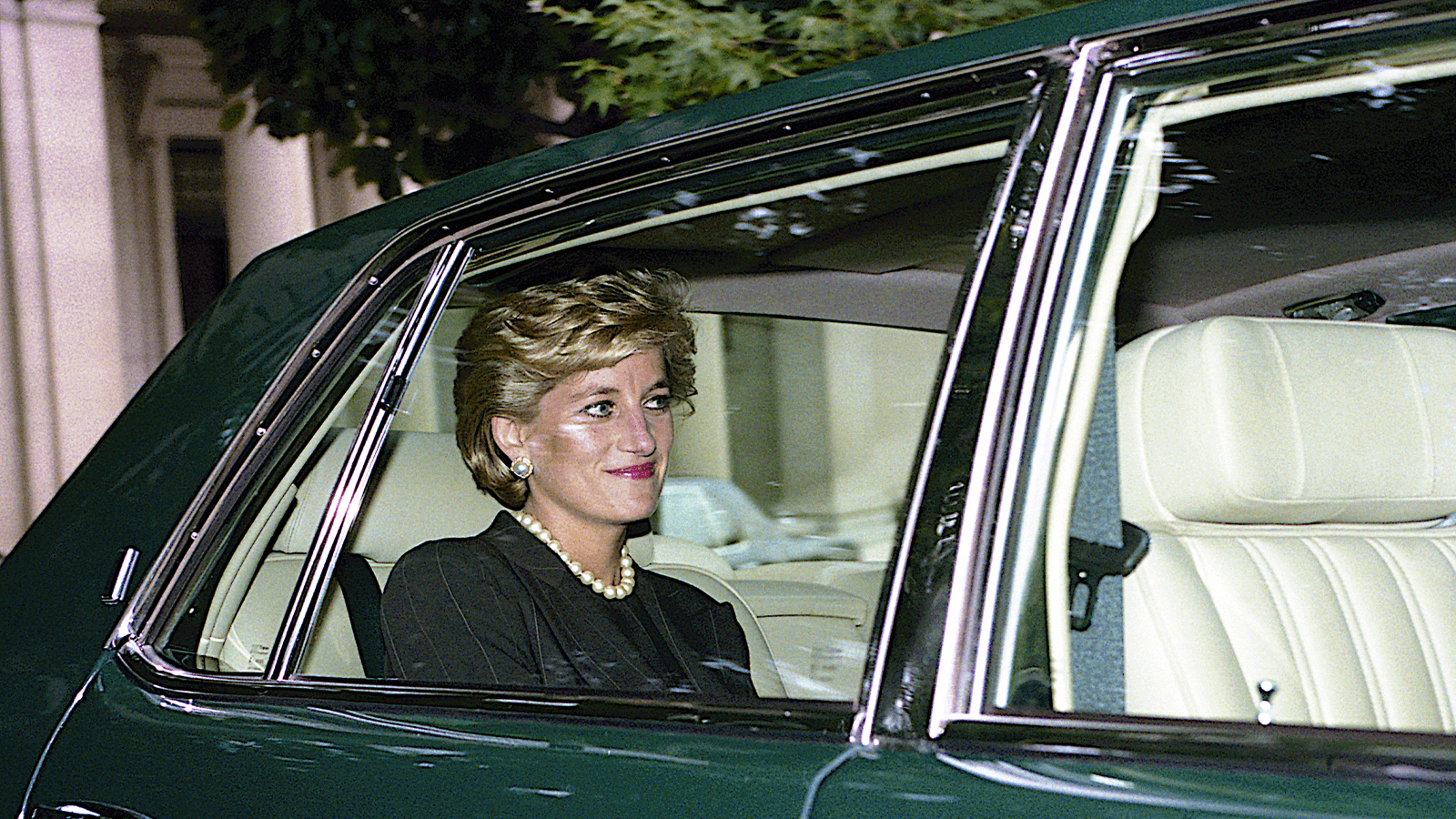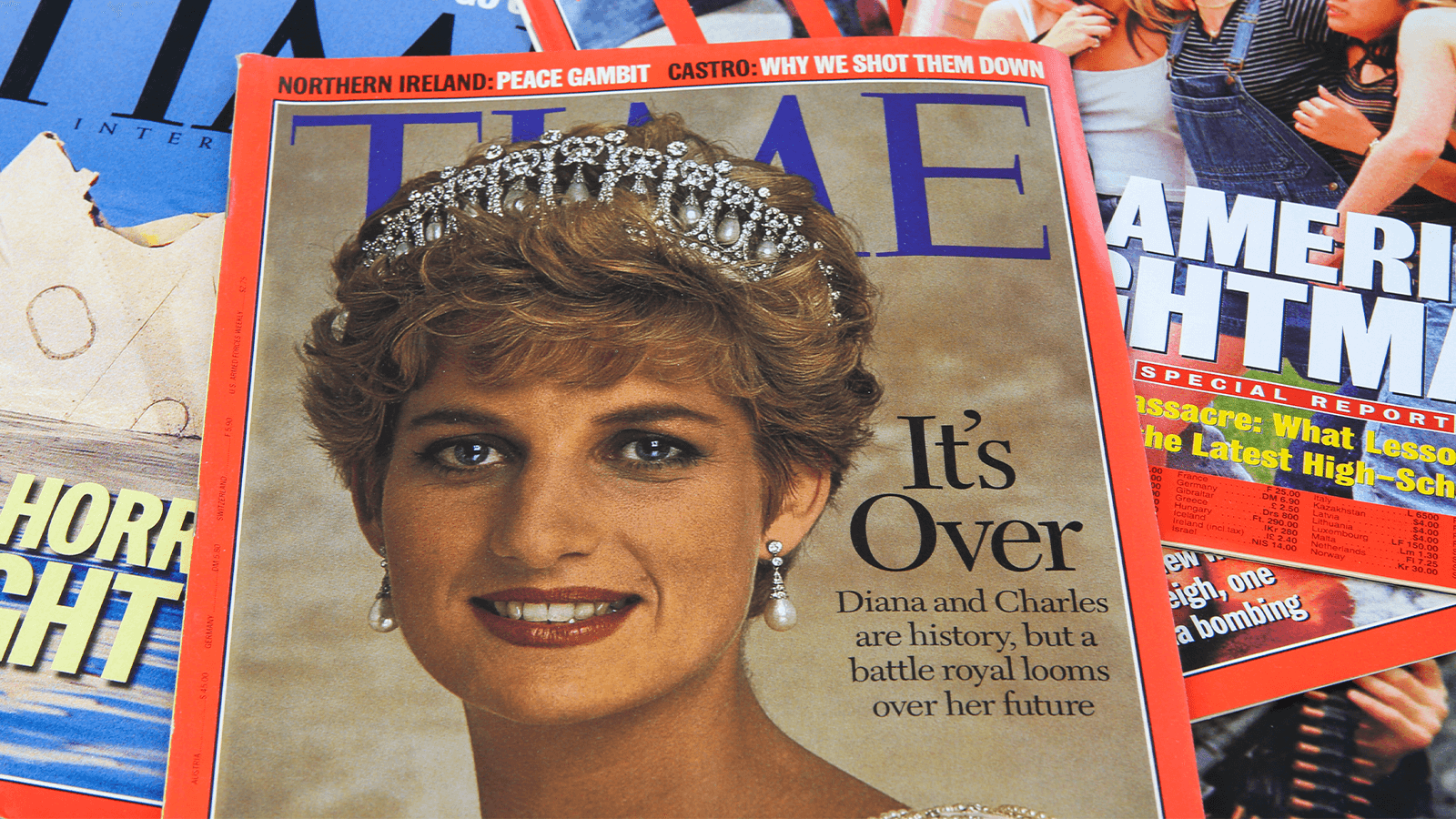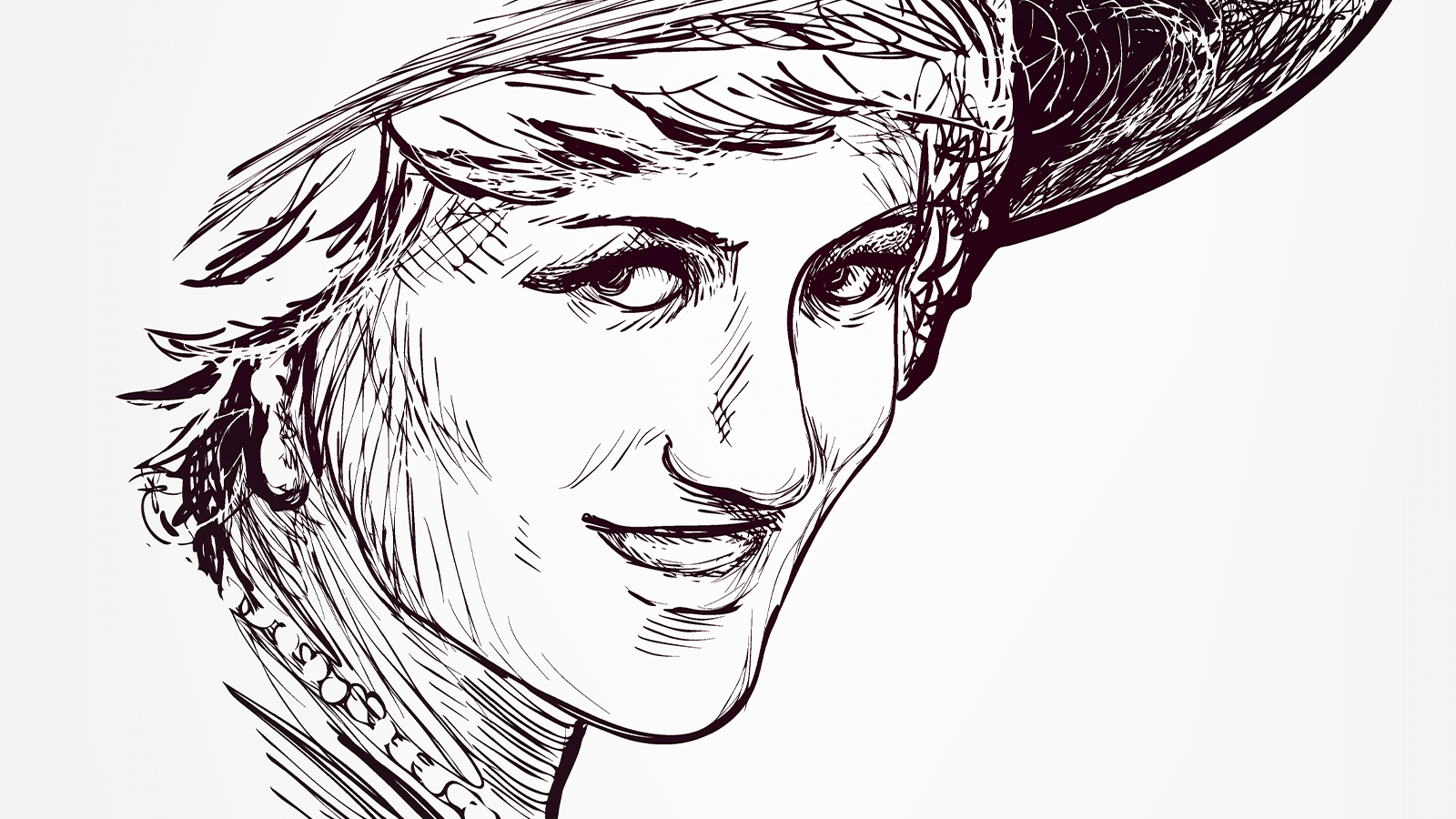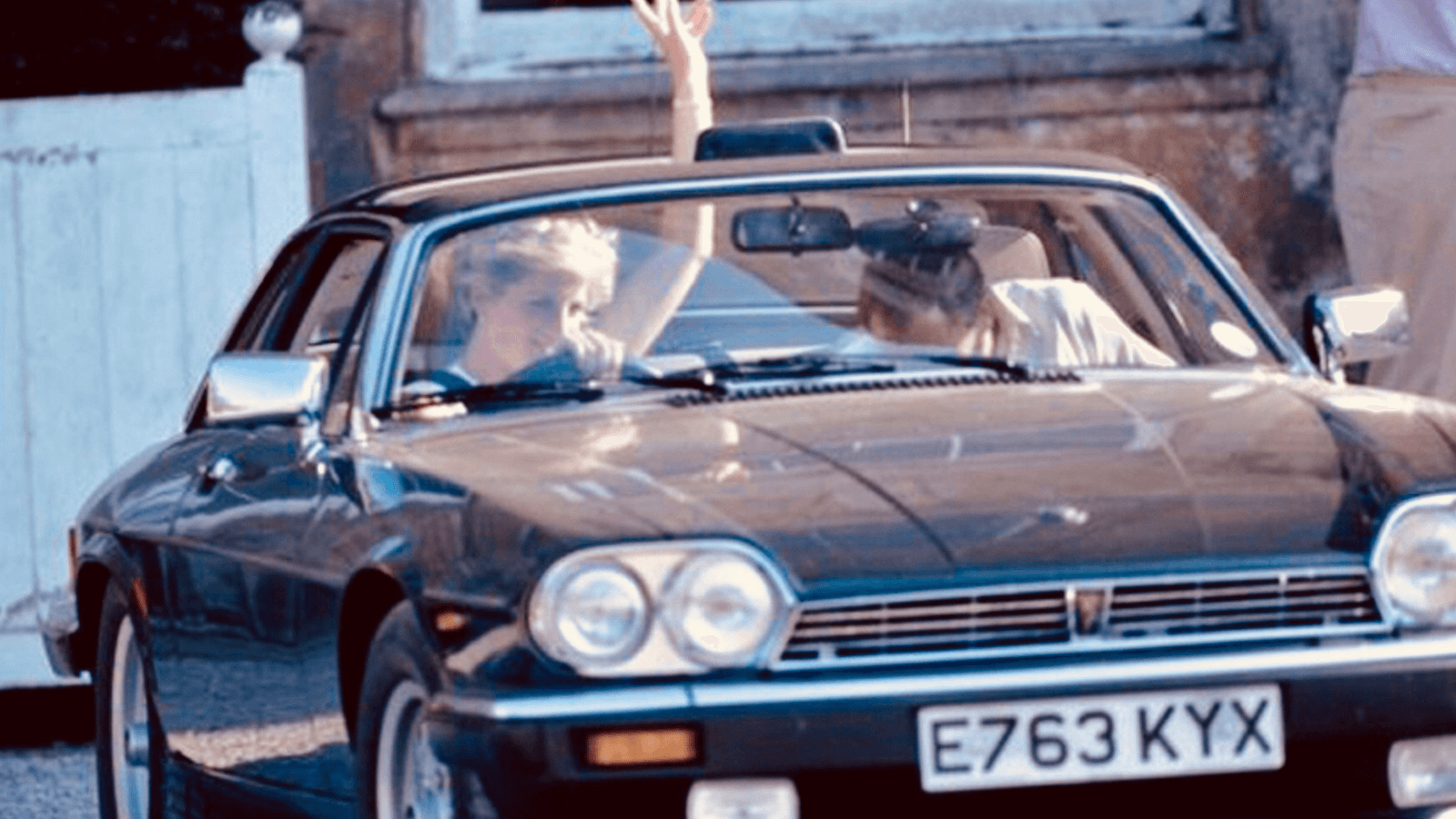
Princess Diana's Love Boat: Why the sinking and loss of super-yacht Cujo really matters
The sinking of Cujo may not have dominated headlines, but the loss of this powerful super-yacht to the Mediterranean depths is a surprisingly emotional reminder of the story and loss of Diana, Princess of Wales
In late July 2023, as news reports emerged of the sinking of a super-yacht called Cujo in the Mediterranean sea, it would have been rather tempting for those who didn’t own such a luxurious, ocean-going vessel to simply sigh and move on without a second thought.
Yet, for those who lived through the mid-1990s and who can therefore also recall what the media were particularly fascinated with at that time, images of this impressive craft sinking may have pricked their eyes with tears. And, we believe, for good reason.
Distress calls from the vessel were first picked up by the Gendarmerie des Alpes-Maritimes at 12.30pm on July 29, 2023. Conditions were glorious, bright skies illuminated the French Riviera.
It was a good day for an excursion, unless you happened to hit an unidentified object as you sped away from the shore of Beaulieu-sur Mer.
This is exactly what happened to Cujo. The impact caused notable damage to the starboard hull and water quickly submerged the engine room. There was no hope of salvation. The abyss slowly opened to take the super yacht down into the darkness.
As Cujo’s seven passengers relocated onto a safety raft alongside, emergency responders were able to retrieve only a handful of items from the troubled yacht as her cabins had been swiftly overwhelmed.
Cujo’s owner had activated the pumps, but – as Thomas Andrews of Harland & Wolff would’ve told you – "the pumps buy you time, but minutes only."
For all of her impressive performance capacity, as well as a particularly intriguing history, Cujo slipped under the waves in what should’ve instead been a relaxed afternoon on the open sea. Gradually descending into the darkness, the echoes of modern history dissolved across the water's surface.
As she sank, a physical reminder of a whirlwind romance and the media frenzy that it had kick-started back in 1997 came to rest. Out of reach, some 2,500 metres down.
For anyone who can appreciate a refined mode of transport, the ability to cruise at will or public history, this was more than just the loss of an affluent individual’s yacht.
The sinking of Cujo was the loss of some of history itself.

Cujo: An unstoppable force built to impress
Across her full lifespan, super yacht Cujo was never a wallflower. She was built to wow, go fast and enjoy life.
Originally constructed in 1972 in the renowned Italian Baglietto shipyard, Cujo was built in line with some particularly demanding customer specifications.
The wish list came from businessman John von Neumann, who was largely responsible for introducing America to the pleasures of Porsche.
John commissioned a vessel that boasted premium luxury and a nostalgic maritime feel. Not to mention a Porsche-like turn of speed.
That might sound like a tall ask but, thankfully, John had asked the Italians to create this highly-anticipated vessel. Being the land of Ferrari, Gucci and the Corleones, one can argue that Italy was more than capable of handling the request. John soon owned the fastest motor yacht in the world.
The resulting craft was simply known as JvNS, but what a remarkable and innovative outcome she was. Measuring in at 80 feet with a raised amidship helm and decadent social area upon the foredeck – complete with two sun-beds up by the bow – a mere glance suggested she existed only for a good time to be had by anyone on board.
Capable of delighting passengers with her luxury fittings while simultaneously proving unsettling to anyone nearby who was up to no good – thanks to her military-style paint and exterior – JvNS was a contradictory blend in persona.
Whoever had the joy of testing her performance would first be greeted by an old-fashioned wheel and then extraordinary power surging from two 54-litre V-18 turbo diesel engines; delivering a thrilling 2,700 hp and top speed of 42 knots.
When JvNS was around, you didn’t just listen out for engines thundering their way across a stretch of water, but for an amazing turbo whistle too.
JvNS had a magnetic pull wherever she happened to go. It was a refined swagger that attracted celebrities with ease. Clint Eastwood, Bruce Willis, Brooke Shields, Robert Downey Jr., Winona Ryder and Tony Curtis are just a few of the legendary names who’ve been made welcome.
Regularly docked outside the Café de Paris in the world famous port of St Tropez, it’s no wonder that JvNS became a celebrity HQ in her own right. She was unparalleled in every way.
In 2020, after a refit and performance upgrade to 3,300 hp, it was no surprise the JvNS – having affectionally gained the name Cujo from a former owner – starred in a short movie entitled The Portofino Affair.
Produced by yet another one of her owners – British car collector, buyer, seller and restorer Simon Kidston – we dare you not to be sucked into Cujo’s allure.
Her name translates as ‘unstoppable force’ in Indian, and this footage demonstrates how Cujo picked up the name for which she is best known. We also bet that, after the showing of this mere five-minute movie, you will likely have failed on that dare.
We also bet that you will be impressed by the majestic power of Cujo as she stars alongside a 1970s Lamborghini Miura and Maserati Ghibli Spyder in what had us reminiscing over the opening scenes of The Persuaders.
Either way, it is clear to see how Cujo gained a following. And this was the case before the mid-1990s, when she was about to navigate into noteworthy cultural history too.

The world’s most influential woman steps aboard
Super yacht Cujo was more than used to hosting her fair share of big names but someone was about to step aboard who would outshine all those before her.
In turn, this would push the impressive vessel into the eye of a world headline storm. For her esteemed guest and the ship, the fateful summer of 1997 was about to unravel.
Cujo had moved on from her initial owner von Neumann to arms dealer Adnan Khashoggi, before then being acquired by Khashoggi’s cousin, multi-millionaire and film producer Dodi Al Fayed.
As Cujo started afresh with Dodi – son of Egyptian businessman Mohammed Al Fayed – the yacht benefitted from a £1 million refit and she shone brighter than ever before.
Meanwhile, over in the UK, the British public were adjusting to the sad but inevitable news that, within their monarchy, Prince Charles and Diana, The Princess of Wales had divorced in August 1996. The proceedings marked the conclusion of the most observed and scrutinised Royal marriage in existence.
Many Brits were disheartened to see what had seemed – back in the early 1980s – such a promising romance as it served to secure the line of British Royal succession.
However, as the divorce went through and Diana lost the Her Royal Highness (HRH) status, many were fully supportive of the former princess. Much of the public’s empathy stemmed from how the marriage had made Diana particularly unhappy as she’d watched an affair smoulder between prince Charles and Camilla Parker Bowles over many years.

Many had already suspected the royal couple would never work out. The clues had been there from the beginning. In February 1981, as the couple announced their engagement – with Lady Diana Spencer at the tender age of 19 – Prince Charles spectacularly put his foot in it during the official engagement interview.
When asked if they were in love, a shy but glowing Lady Diana replied: “Of course.” Meanwhile Prince Charles uttered the infamous, blundering words of “Whatever ‘in love’ is.” Diana’s subsequent look down towards the floor says it all. It was crushing.
Now, 15 years later and the divorce complete, Diana was finally devoid of Royal obligation and still a beautiful woman. Thanks to her humanitarian efforts, she was also regarded as the world’s most influential too.
In the July 1997 issue of Vanity Fair, Diana had been photographed by Mario Testino and her beauty was more evident than ever. Diana was 36 and single, while the world awaited what she would do next.
Sitting like a cocked gun were the press. With the slightest hint of romance in Diana’s life, they were ready to pounce. The resultant media hounding had sent her first post-divorce prospect – cardiologist Hasnat Khan – scurrying and Diana had faced heartbreak once more. She was in need of an escape from home turf and distraction.
Cue the Al Fayed family, who had a long-term and close-knit relationship with the Royals. Mohammed Al Fayed invited Diana to join them at one of his residences – the Villa Windsor, former home of the Duke and Duchess of Windsor in Paris – and Diana keenly accepted.
With her sons on holiday with their father at Balmoral and she at a loss, the invitation proved an attractive, well-timed idea to Lady Diana. Soon after, Diana was spotted on Mediterranean waters, out yachting with Dodi Al Fayed.
Diana and Dodi had first met in 1986, when Fayed played against Diana’s then-husband Princes Charles at a polo match. Afterwards, they bumped into one another every once and a while at various social events. Dodi enjoyed a playboy lifestyle, Diana persevered with her testing marriage.

Cujo was one of two yachts the pair now utilised, the other being the Jonikal which was owned by Mohammed Al Fayed. The ever-present press pestered both yachts with smaller vessels of their own, photographers always at the ready.
Within days, rumours began to spring that Dodi was Diana’s new lover. It was an intriguing prospect. As many had watched Diana suffer the long-term heartache, embarrassment and disappointment of an unsuccessful marriage with Prince Charles, they had also wished that, one day, she would find meaningful love and happiness elsewhere.
Eventually, the press were in luck – the famous photograph, nicknamed ‘The Kiss’ circulated, establishing what everyone had suspected. It was officia: Dodi and Diana were in a relationship.
With the revelation, many days out upon Cujo and the Jonikal followed. On both crafts, Diana looked healthy, happy and care-free.
The world watched fascinated as Diana re-found herself, far from Charles and all the resulting mess that had occupied most of her young adulthood.
Pictures of Diana relaxing in swimwear, conversing with Dodi and enjoying jet-ski rides upon the glittering waters, all suggested she’d finally accepted that her marriage to Prince Charles and the Royal life she had known had ceased.
Of everyone observing, it was the Brits who were most happy to see Diana finally having some fun while any woman who knew the heartache of a failed relationship likely cheered her on with the mantra of: You show him girl.
Throughout the summer of 1997, the romance between Diana and Dodi enthralled the world. Despite Diana’s evolving status in societal circles, she was at the height of her power.

A poignant loss as contemporary history slips away
As the blissful, heady cruise came to a close, Diana and Dodi prepared to return to England. Because Dodi had some business to take care of on behalf of his father in Paris, the couple opted to fly to the French capital on route.
They planned to have dinner in central Paris before travelling to the Ritz hotel, owned by Mohammed. However, the local paparazzi had heard they were in town and their first attempt at dining had been aborted. Unimpressed, the couple tried again at the Ritz.
As Diana and Dodi made their way through the hotel’s rotating doors, an intimidating mass of vehicles, photographers and noise amassed outside the glamourous venue.
Diana and Dodi ate and sheltered within the hotel. The nearby ruckus continued and grew. Diana in particular was used to being hounded by the press but circumstances that evening were getting out of hand. It was becoming an intimidating situation.
CCTV footage from within the Ritz shows the couple feeling increasingly concerned and harassed as the night wears on. Although safe within the confines of the hotel, they appear understandably keen to leave.
What was to follow next was one of the most tragic sequences in contemporary history. Aiming to fool the skirmish outside, a decoy vehicle left at the front of the Ritz in the hope of luring most of the mob away. In part, the distraction worked but a few, less naïve journalists, hung back.
At the rear of the hotel, Diana and Dodi exited via the back door, climbing into another car. The hope was to leave unnoticed and, in doing so, evade the press. The plan did not work.
Much like the hotel, their black Mercedes quickly found itself also harassed by the media, many of whom followed on motorcycles. What resulted was a short but desperate chase that was to culminate with a horrific conclusion.
The car that had tried to whisk Diana and Dodi to safety instead crashed at high speed within the Pont de l’Alma tunnel.
Dodi and driver Henri Paul died at the scene, while bodyguard Trevor Rees-Jones and Lady Diana were both seriously injured. Diana was taken to La Pitié Salpêtrière hospital but, at around 4am, passed away from injuries sustained in the crash.
As the news filtered out, the world was in shock. No-one was quite able to take in what had happened. One of the world’s most adored women had been lost in a catastrophic accident after a new start had just begun to look tangible.
Momentous public grief ensued, it all seemed unbelievably unfair. Happiness had been within reach for Diana and then cruelly, it was snatched away.
In today’s Britain, Prince Charles is now King with his mistress Camilla having become Queen Consort. Diana’s sons, who were so deeply affected by her death, are now both grown and married with children of their own.
But, in the background, the tragedy of that night and what could have been lingers on. The British public haven’t forgotten.

It is these difficult memories that have yet again been evoked as images of the sinking Cujo were released. While the public may no longer have Lady Diana, there remain physical elements of her legacy which exist beyond the tragic incident of August 31, 1997.
It is possible to visit Althorp House – the Spencer family home in Northamptonshire – and, from time-to-time, personal correspondence and artefacts that once belonged to Diana surface in a museum exhibition or come to auction.
However, the super yacht Cujo was different in many regards to many other connections to Lady Diana’s life.
Cujo was a craft that Lady Diana would likely have appreciated for it was not unknown for the Princess to drive and enjoy her Jaguar XJS, a luxurious and capable car, alongside various sports cars and Range Rovers.
Diana could therefore have understood the luxurious appeal and impressive performance of Cujo. The yacht was more than just a vessel, it became a comfort.

Furthermore, in the summer of 1997, Cujo was a means of escape from many of Diana’s troubles which had made her so unhappy for so long. Between them, both Cujo and the Jonikal were able to offer welcome relief.
The crafts ensured Diana had fun. If you consider the vast pressure and strain endured by Lady Diana up to that point, the fact that she was seen relaxed and smiling on board, was in itself a remarkable feat. They gave hope that happiness was possible.
We like to maintain connections to our past, whether it be physical items, recordings or photographs. They help us to understand our cultural heritage and others around us.
Cujo, while not part of a museum collection and able to be easily accessed, was a brief yet significant component of the latter stages of Lady Diana’s life and her search for what lay beyond the role that had been retracted by the British Monarchy after her divorce from Prince Charles.
For many of us, that summer of 1997 and the photographs of Diana and Dodi on board Cujo and the Jonikal, represent a time when Diana was finally happy.
We eagerly wanted her to be so and even just knowing that those vessels were afloat and doing what they’ve always done best was somehow a comfort after we had lost Diana herself.
To see Cujo floundering, was to have the thought of – ‘But that was where Diana was so happy’ – come to mind.
Losing Cujo is therefore poignant when it comes to our cultural history and heritage. Cujo – like Diana, had soul and wowed wherever she went – and will be missed.












